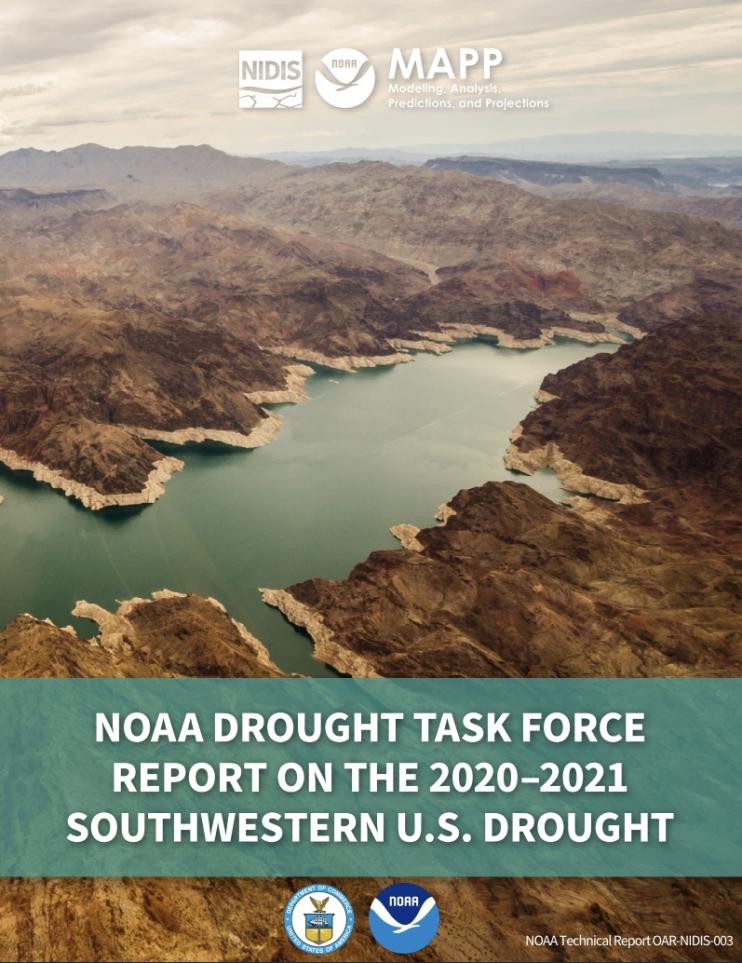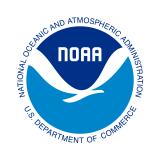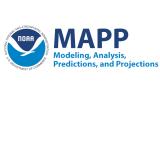NOAA Drought Task Force Report on the 2020–2021 Southwestern U.S. Drought
Using the state-of-science and the collective expertise of the NOAA Drought Task Force, this report addresses three questions about the period of below normal rain, snow, runoff, and soil moisture, known as the 2020-21 U.S. Southwest drought: (1) How bad is it? (2) What caused it? And (3) When will it end?
For the six states of the U.S. Southwest (Arizona, California, Colorado, Nevada, New Mexico, and Utah), January 2020 through August 2021 have been exceptional in the observational climate record since 1895, with the lowest total precipitation and the near-highest temperatures recorded, which together imposed an unyielding, unprecedented, and costly drought. This exceptional drought punctuates a two-decade period of persistently warm and dry conditions throughout the region.
The low precipitation across U.S. states and seasons appears to have been largely due to natural, but unfavorable, variations in the atmosphere and ocean. As such, predicting when total precipitation will return to pre-drought levels is a challenge. While summer 2021 brought welcome monsoon rains to parts of the Southwest, several seasons (or years) of above-average rain and high elevation snow are needed to refill rivers, soils, and reservoirs across the region. This suggests that for much of the U.S. Southwest, the present drought will last at least into 2022, potentially longer.
At the same time, exceptionally-warm temperatures from human-caused warming have evaporated precipitation and melted snowpack more rapidly than in previous years. The warm temperatures that have helped make this drought so intense and widespread will continue (and increase) until stringent climate mitigation is pursued and regional warming trends are reversed. As such, continued greenhouse gas warming of the U.S. Southwest will make even randomly-occurring seasons of average- to below-average precipitation a potential drought trigger, and intensify droughts beyond what would be expected from rainfall or snowpack deficits alone. Human-caused increases in drought risk will continue to impose enormous costs upon the livelihoods and well-being of the ~60+ million people living in the six states of the U.S. Southwest, as well as the broader communities dependent on the goods and services they produce.
The NOAA Climate Program Office’s Modeling, Analysis, Predictions, and Projections (MAPP) Program organizes the Drought Task Force IV to coordinate the activities of researchers supported through the MAPP/National Integrated Drought Information System (NIDIS) Fiscal Year 2020 grant competition, "Characterizing and Anticipating U.S. Droughts’ Complex Interactions." The goal of this research initiative is to advance the understanding of drought causes and predictability, as well as drought modeling, prediction, and monitoring capabilities.





